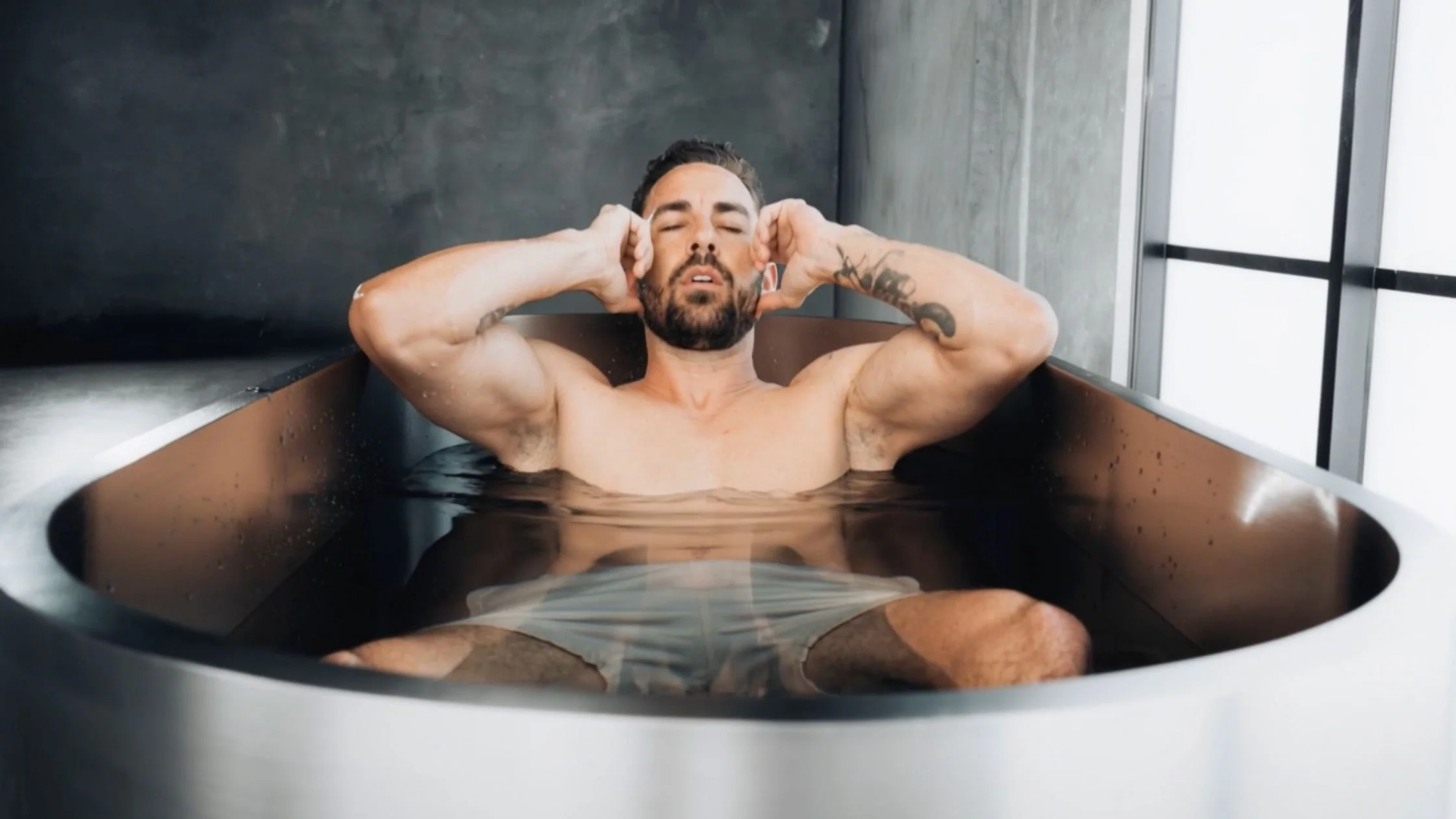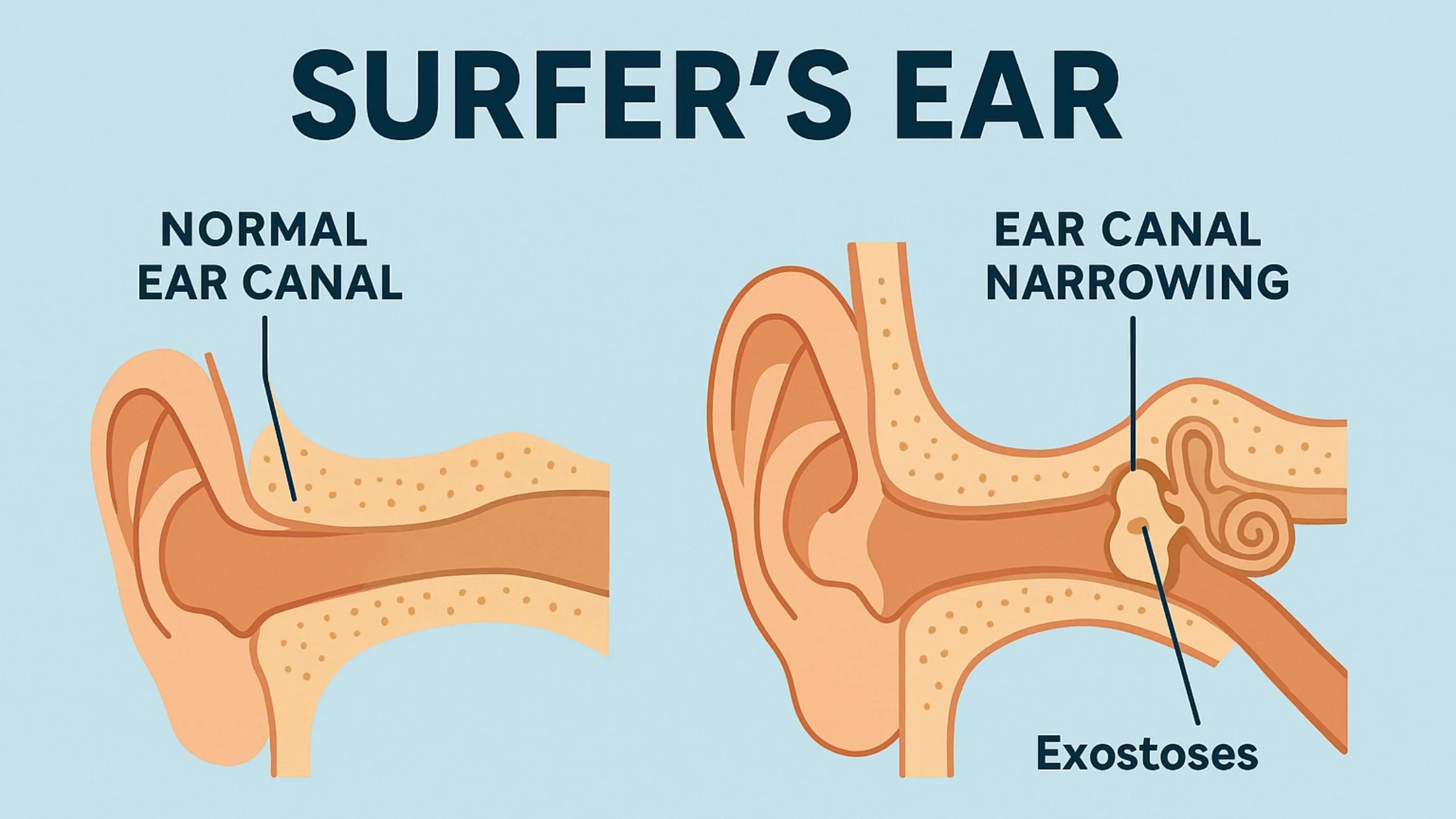Surfer’s Ear and Cold Exposure: What You Need to Know
If you spend a lot of time in cold water, whether it’s surfing, plunging, or dunking in your backyard ice bath, you might’ve heard of something called Surfer’s Ear. It’s not one of those myths your mate made up after too many post-surf coffees. It’s real, and it’s worth knowing about if cold therapy is part of your daily ritual.
Let’s break it down in plain English: what it is, why it happens, and how to make sure your ears don’t end up paying the price for all those cold dips.
What actually is Surfer’s Ear?
Surfer’s Ear (officially called exostosis) is when bone slowly starts growing inside your ear canal after repeated exposure to cold water and wind.
Think of it like your body trying to armour up. It’s just doing what it thinks is right. The problem is, that armour ends up narrowing the ear canal, trapping water and making you more prone to infections and hearing issues down the line.
It’s most common in surfers, divers, and cold-plunge regulars. The key takeaway is that the bone growth doesn’t go away on its own. Prevention is the move.
How it happens
Here’s the quick science without the fluff:
When cold water and wind hit your ears, the sensitive skin and bone underneath react to the temperature change.
Over time, your body lays down new bone tissue to “protect” itself.
That extra bone keeps growing bit by bit until it starts blocking the canal.
Water and wax get trapped, infections become more common, and hearing starts to feel muffled, like your ears just won’t pop.
Most people don’t notice it for years until one day they can’t clear the water out after a plunge or surf, or start needing a few more “what’s that, mate?” in conversation.
Can cold plunges really cause it?
Yes, the same mechanism that affects surfers can affect anyone who regularly dunks in cold water, especially if you submerge your head.
Even short exposures, done often, can add up over time. If you’re hopping into 3-5°C water every morning, your ears are getting a strong dose of the same environmental stress that triggers exostosis in surfers.
This isn’t a reason to stop. It’s a reason to be smart about it.
What it feels like
Early on, you probably won’t notice much. Then you might start to feel like:
Your ears are constantly blocked after a plunge
Water takes forever to drain out
You get more ear infections than usual
Sounds feel dull or distant
If that sounds familiar, it’s worth seeing an ENT doctor. They can look inside and check for early bone growth. If left too long, surgery might be needed to shave it back, which is never the kind of reset you’re looking for.
How to prevent it
Here’s the good news. It’s easy to avoid. You just need to make a few small tweaks to your cold ritual:
1. Protect your ears before you plunge
Get yourself a pair of cold-water earplugs. The kind surfers wear are perfect because they let sound in but keep water and wind out. A neoprene headband or cap also helps if you’re outside and it’s windy.
2. Keep the dunk short if you’re going all in
If you’re plunging daily, you don’t need to fully submerge every time. Your nervous system gets the benefit even if your head stays dry. Save the full dunk for when you want that deep reset feeling, not every session.
3. Dry them properly
After you get out, tilt your head, let the water drain, then gently dry your ears with a towel. You can also use a hairdryer on the cool setting for a few seconds per ear. Just don’t jam cotton buds in there. That’s a one-way ticket to irritation.
4. Get checked every so often
If you’re a regular cold-water person, whether surfer, swimmer, or plunger, it’s worth having your ears looked at every couple of years. Early detection means easy prevention.
Why it matters
Cold exposure is meant to make you feel better. Clearer. More focused. More alive.
Nothing kills that faster than dealing with constant ear infections or muffled hearing. Taking a few precautions means you can keep showing up for the ritual, not the recovery from surgery.
Surfer’s Ear doesn’t just happen in the surf. It’s a slow-build response to repeated cold water hitting your ears, something every cold-therapy regular should be aware of.
Stay consistent but stay smart. Wear protection, keep your plunges clean and short, and give your body the respect it deserves.
The cold builds discipline. The heat builds patience. Smart recovery builds longevity.
That’s what we’re all about.


